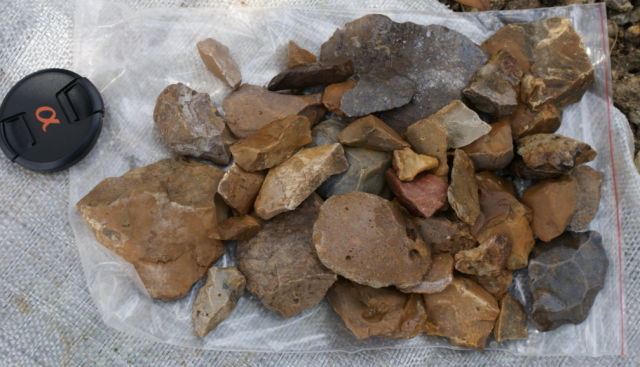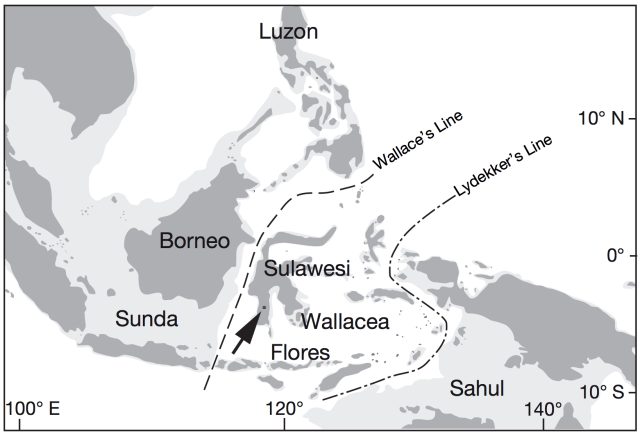A group of mysterious humans left these tools in Indonesia over 118,000 years ago

A few of the hundreds of stone tools that researchers found at the Talepu excavation in Sulawesi, Indonesia. Camera lens cap is included for size comparison. (credit: Erick Setiabudi)
Over 118,000 years ago, on the island of Sulawesi in Indonesia, a group of humans settled down and made a home. The only evidence of their existence is a large collection of stone tools, carefully crafted, preserved in the sediment at the edge of a river. A group of archaeologists recently spent several years excavating in the area and dating what remains they found. Astonishingly, their work suggests that humans may have arrived on this island as early as 195,000 years ago. And it’s extremely unlikely they were Homo sapiens.
Sulawesi is part of the Indonesian island chain that forms a gentle curve in the waters between Southeast Asia, the Philippines, and Australia. But at the time these early humans were arriving during the Pleistocene, Australia and New Guinea were one continent, called Sahul, and many of the Indonesian islands were connected by land. Sea levels were often much lower than today due to glaciation, which locks water up into polar ice. Previous research has shown that early human groups crossed over to the islands during this time, before Homo sapiens evolved. Indeed, Sulawesi’s neighboring island Flores was home to the recently discovered Homo floresiensis, or Hobbit people, a group of unusually small hominins who arrived on the island roughly 1 million years ago.

Here you can see the region where the tools were found. Exposed land during periods of low sea level (−120 m) during the Pleistocene is lightly shaded. Talepu Area indicated by an arrow. (credit: Nature)
The researchers published their findings this week in Nature, detailing the stone tools they found and explaining how they determined their age. The tools were typical of hominins during the Pleistocene, which is to say they were simple stone slivers called flakes made from banging one rock against another to produce small, sharp-edged pieces that could be used as knives, scrapers, weapons, and more. “There is patterning in the flaking techniques,” write the researchers, but “there is little evidence that the stoneworkers were creating tools of specific form.” So these were general purpose tools.
Read 6 remaining paragraphs | Comments
STRATEGIES FOR A COMPANY’S INTELLECTUAL PROPERTY. IP protection is a part of your business strategy and matches your commercial goals. A simple IP strategy is to protect your product and service by getting patent, trademark and copyright certificates.
U.S. COMPANY REGISTRATION. We help our foreign clients with registering U.S. business to support moving their innovations to U.S. market. We assist in navigating the process of setting up a new business and support while it grows.


